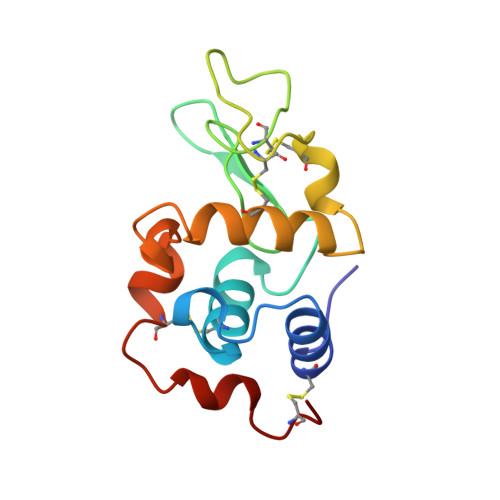Bound-solvent structures for microgravity-, ground control-, gel- and microbatch-grown hen egg-white lysozyme crystals at 1.8 A resolution.
Dong, J., Boggon, T.J., Chayen, N.E., Raftery, J., Bi, R.C., Helliwell, J.R.(1999) Acta Crystallogr D Biol Crystallogr 55: 745-752
- PubMed: 10089304
- DOI: https://doi.org/10.1107/s0907444998016047
- Primary Citation of Related Structures:
1BVX, 1BWH, 1BWI, 1BWJ - PubMed Abstract:
A number of methods can be used to improve the stability of the protein crystal-growth environment, including growth in microgravity without an air-liquid phase boundary, growth in gels and growth under oil ('microbatch'). In this study, X-ray data has been collected from and structures refined for crystals of hen egg-white lysozyme (HEWL) grown using four different methods, liquid-liquid dialysis on Earth and in microgravity using the European Space Agency's (ESA) Advanced Protein Crystallization Facility (APCF) on board the NASA Space Shuttle Life and Microgravity Spacelab (LMS) mission (STS-78), crystallization in agarose gel using a tube liquid-gel diffusion method and crystallization in microbatch under oil. A comparison of the overall quality of the X-ray data, the protein structures and especially the bound-water structures has been carried out at 1.8 A. The lysozyme protein structures corresponding to these four different crystallization methods remain similar. A small improvement in the bound-solvent structure is seen in lysozyme crystals grown in microgravity by liquid-liquid dialysis, which has a more stable fluid physics state in microgravity, and is consistent with a better formed protein crystal in microgravity.
Organizational Affiliation:
Section of Structural Chemistry, Department of Chemistry, University of Manchester M13 9PL, England.














